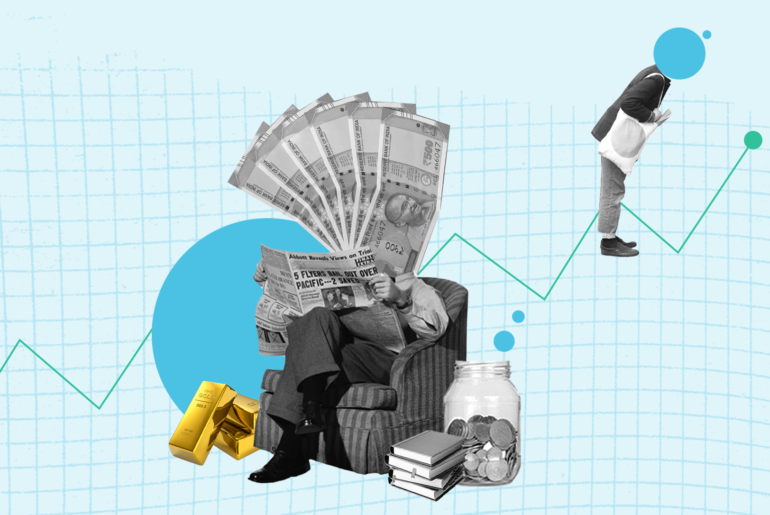Last Updated on Aug 26, 2022 by Aradhana Gotur
Harsh Vora is a proprietary investor and day trader with more than 10 yrs of experience in financial markets and is interviewed on ET NOW.
The bull market that began in 2020 may have led many of us, especially those who entered the stock markets in the past 2 yrs, to believe that stock markets are a source of easy money – especially with India’s growth story remaining intact.
But, the downturn in equity markets since October 2021 and the resulting drawdown in investor portfolios have once again brought risk at the forefront of investment strategies. Most of us view risk as the probability of a loss of capital. What if my largest stock position falls by 40%? In finance, however, this would be an incomplete understanding of risk.
Table of Contents
Standard deviation
Consider this: a stock has generated an average return of 18% per year over the last 10 yrs. If you invest in this stock expecting a similar return going forward, then the risk that matters is not just the potential drawdown in stock price from your purchase price. Since this is a long-term investment, the risk is how much your actual return deviates from your expected return every year.
In other words, risk should be measured as a dispersion of actual returns around your expected return. In fancy finance jargon, this dispersion is called standard deviation. The higher the standard deviation of an asset – whether individual stocks or mutual funds – the greater the risk.
This is why small-cap and mid-cap stocks are considered riskier than large-cap ones. Their actual returns are more widely dispersed around expected returns. In other words, volatility in their returns is higher than large-cap.
Let’s look at the DSP Mutual Fund schemes to get an idea of how to look at standard deviation. As you may notice below, the standard deviation of the DSP Small-Cap fund is the highest (18.81%), while that of its flexi cap fund (which is essentially a proxy for large-cap) is the lowest (17.24%). This should be the case as per our discussion on risk above.
How to read this figure?
Assuming that the DSP Small Cap has an average return of 21.88% over the last 10 yr, about 68% of the time, the fund’s returns would fall between 3.07% (which is 21.88 – 18.81) and 40.69% (which is 21.88 + 18.81).
But, why 68% of the time? This is because we are assuming a normal distribution – that is, we are assuming that most of the time, the fund would generate average or near average returns and the rest of the time, its returns would taper off symmetrically toward the extreme. This is only a matter of statistical convenience and works for most practical purposes.
Which funds normally have the lowest volatility (standard deviation)?
Overnight funds, which invest most of their assets in the government’s treasury bills (short-term instruments spanning 90 to 182 days), money market funds, or ultra-short duration funds – all of these have low risk. But remember, they also come with low returns. Most overnight funds have had a 3-yr compounded growth rate of less than 4% as they invest in safe assets. On the other hand, most thematic or sectoral funds and small-cap funds have a higher standard deviation.
Next, let’s look at another important metric that gives us an idea of a mutual fund’s return performance but in relation to the risk taken by the fund manager. This is called the Sharpe Ratio.
Sharpe ratio
What is the historical return that a mutual fund has given for every 1 unit of risk taken in the fund? Furthermore, is the return generated by the fund an outcome of taking excessive risk or is it owing to the fund manager’s skill? Remember, a higher risk is usually accompanied by a higher return, but is your risk appetite compatible with that higher risk? The Sharpe ratio attempts to answer these questions. The higher the Sharpe ratio, the better for the investor.
The formula is simply the return given by the fund minus the return given by a risk-free asset divided by the standard deviation of returns. We subtract the risk-free rate because we wish to know what “excess return” (that is, in excess of the risk-free rate) the fund house has generated per unit of risk.
For instance, if the return generated by the fund is 21.88%, the risk-free rate (which is the 10 yr government bond rate) is 7%, and the fund’s standard deviation is assumed to be 18.86%, then the fund’s Sharpe ratio would be (21.88-7)/18.86 or 0.79. In other words, the fund has generated an excess return of 0.79% per unit of risk.
Let’s look at HDFC fund’s small, mid, and large-cap schemes and compare their Sharpe ratio. As seen below, the HDFC Small-Cap Fund has delivered a very poor Sharpe ratio of 0.04. This means it has generated only 0.04% excess return for every 1 unit of risk.
Remember, however, that having a high Sharpe ratio is not always desirable. To judge the quality of the Sharpe ratio, one must pay attention to the inputs of this ratio. For instance, a fund generating 5% excess return with 3% risk would have a Sharpe ratio of 1.67 (which is 5 divided by 3). While this is greater than a fund which generates a 10% excess return with an 8% risk (having a Sharpe ratio of 1.25), the former’s excess return itself is lower.
So while the Sharpe ratio is an important metric to judge the “risk-adjusted” return of the fund, one must be mindful of its use.
While there are other metrics that may provide information about a fund’s riskiness, these two – standard deviation and Sharpe ratio – are quite holistic. The former informs us about the riskiness of the fund, whereas the latter tells us about the return per unit of risk. Tickertape’s Mutual Fund Screener is an easy way to find mutual funds with the lowest standard deviation and the highest Sharpe ratio.




